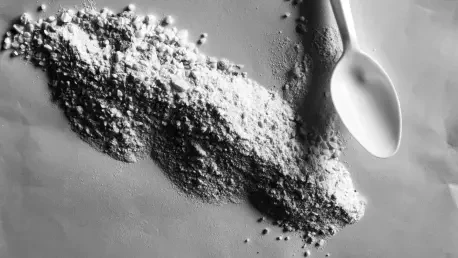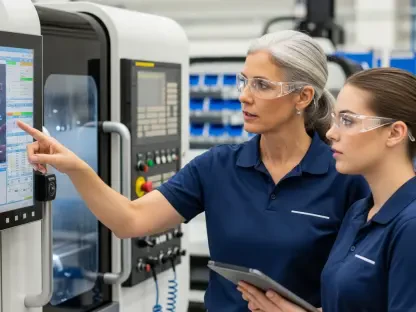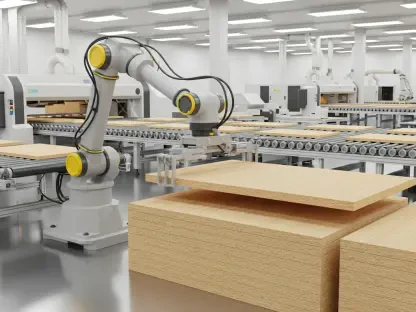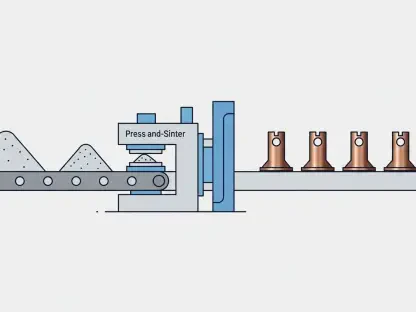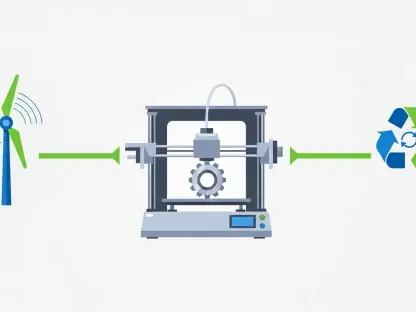The soda ash market has long been a vital component of global industrial operations, providing essential materials for diverse sectors such as glass, chemical, and detergents. Yet, the adoption of artificial intelligence (AI) and sustainable practices currently stands at the forefront of driving its robust growth trajectory through 2034. With an industry valuation pegged at USD 20.04 billion in 2024, forecasts suggest significant expansion, anticipating a rise to USD 26.67 billion over the next decade. This promising growth is underscored by a compound annual growth rate (CAGR) of 2.90%, reflecting not only market resilience but also its adaptability to rapid technological advancements and environmental imperatives. As the industry evolves, its ability to seamlessly integrate cutting-edge technology and sustainable strategies will be crucial in sustaining this growth and enhancing its market scope globally.
Market Overview
The soda ash industry’s enduring relevance lies in its multifaceted applications, from being a crucial raw material in the glass industry to its functional use in chemical production. In 2024, the market maintained its strong position with a valuation of USD 20.04 billion, and projections indicate a substantial uplift to USD 26.67 billion by 2034. This growth aligns with the industry’s integral role across multiple industrial activities, capitalizing on soda ash’s versatility in processes ranging from glassmaking to water treatment. Despite facing global challenges such as fluctuating raw material costs and stringent environmental regulations, the soda ash market demonstrates resilience, leveraging innovations that underpin its continued demand. Technological integration and sustainable practices further solidify its significance, ensuring that its pivotal role in industrial applications is not only maintained but also expanded as new technological paths are explored.
Regional Insights
In the current landscape, Asia Pacific commands a prominent 55% market share, illustrating its industrial prowess. The burgeoning infrastructure in China and India’s construction and automotive sectors is a key driver, necessitating increased soda ash consumption. This growth is symptomatic of the broader industrialization wave sweeping the region, fostering an environment ripe for soda ash demand. Meanwhile, North America is gaining traction as a region of swift market growth, thanks to its rich natural resource deposits and its role as a leading glass manufacturer. Particularly in the U.S., significant trona deposits and the country’s position as a primary soda ash exporter bolster its regional market influence. These dynamics highlight the geopolitical nuances of the soda ash market, reflecting varied regional strategies and demands that shape the industry’s global reach and developmental pace.
Segmentation: Type and Application
Diverse types of soda ash underscore its market adaptability, with synthetic variants dominating due to their high purity and performance consistency in glass production. However, natural soda ash is experiencing a surge in popularity, appealing to cost and environmentally conscious industries due to its sustainable production process. This emergent preference suggests strategic diversification within the market, balancing cost-effectiveness with the demand for reliable, high-quality inputs. On the application front, soda ash’s utility in the glass industry holds the highest market share, spurred by construction and automotive demands for sturdy, transparent materials. Additionally, the chemical sector is a key growth area, leveraging soda ash for sodium compound production needed in numerous industrial processes. This segmentation insight reflects a market evolving to better meet sector-specific needs, ensuring its relevance and future growth.
Technological Integration
AI’s integration into soda ash production has revolutionized the efficiency and precision of manufacturing processes. Enhanced real-time data analytics and predictive modeling have refined quality control measures and optimized operations, translating into reduced downtime and increased production efficacy. This technological shift signifies an evolution towards more integrated and efficient production ecosystems, with AI tools driving higher standards and responsiveness to market demands. By embedding AI within production frameworks, companies not only stay competitive but also set new benchmarks for industry practices, ensuring superior product consistency and quality. The overarching impact of AI on the soda ash market is substantial, laying a foundation for continued innovation and operational excellence across the industry.
Environmental Applications
Beyond traditional industrial roles, soda ash serves critical functions in environmental management. Its effectiveness in air pollution control and water treatment solutions underscores its multifaceted applicability. By adjusting pH levels and removing impurities, soda ash plays a pivotal role in environmental remediation, demonstrating its versatility beyond pure industrial use. These environmental applications highlight soda ash’s strategic importance in addressing contemporary ecological challenges, establishing it as a vital component in sustainability initiatives. The expansion of these roles not only reinforces soda ash’s market appeal but also aligns with growing environmental consciousness, ensuring its continued relevance in tackling global ecological concerns.
Sustainability and Innovation
Innovations centered around sustainability are propelling the soda ash market into uncharted territories of growth. Companies are increasingly adopting environmentally friendly methods to minimize emissions and comply with modern regulatory requirements. A prime example is the Solvay and ENOWA partnership, which aims to establish a carbon-neutral soda ash plant by 2030. Such initiatives illustrate the industry’s commitment to sustainable development, indicating a shift towards greener production paradigms. The marriage of technology and sustainability sets new industry benchmarks, reflecting changing consumer expectations and regulatory landscapes. As innovation drives the soda ash sector forward, sustainability remains a core tenet, ensuring its ongoing evolution and market leadership.
Market Drivers and Challenges
Demand for high-quality soda ash is driven by its extensive applications across diverse industries, particularly pharmaceuticals, water treatment, and the burgeoning electric vehicle sector. The glass industry, notably in solar applications, remains a steadfast growth pillar, reinforcing soda ash’s status as an indispensable industrial component. However, the sector faces significant challenges, primarily due to the volatile nature of energy prices, given the energy-intensive processes involved in soda ash production. These fluctuations can adversely affect profitability and operational efficiency, necessitating adaptive strategies to mitigate their impact. In overcoming these challenges, the industry must continue to explore innovative solutions to sustain its upward trajectory and market viability.
Strategic Opportunities
Strategic opportunities within the soda ash market are increasingly tied to innovations like Carbon Capture and Utilization (CCU). These techniques are reshaping production frameworks, offering potential revenue streams and enhancing sustainability profiles. Adoption of CCU methodologies aligns with progressive environmental goals and market development, suggesting dynamic avenues for growth. As companies capitalize on these techniques, they open doors to more sustainable and efficient production processes, aligning with broader market imperatives and consumer consciousness. This alignment points toward a forward-thinking industry strategy, demonstrating its adaptability to evolving sustainability standards and aspirations.
Competitive Landscape
The competitive landscape within the soda ash industry is defined by strategic acquisitions and partnerships aimed at expanding production capabilities and solidifying market presence. Noteworthy transactions such as WE Soda Ltd’s acquisition of Genesis Alkali and Sisecam’s expansion through acquiring stakes in U.S. operations illustrate significant market shifts. These movements signify a strategic focus on bolstering capacities and advancing technological capabilities. The competitive dynamics within the soda ash market are indicative of an industry in flux, attuned to shifting demands and geographic advantages, and poised to leverage these insights for enhanced market positions and robust growth projections.
Conclusion
Beyond its conventional applications in industry, soda ash plays a crucial role in environmental protection and management. One of its key uses is in controlling air pollution, where it effectively removes contaminants and helps regulate emissions. Additionally, soda ash is instrumental in water treatment processes. It achieves this by adjusting the pH levels of water, facilitating the removal of impurities, and ensuring the water meets safety standards. This function in environmental remediation highlights soda ash’s extensive adaptability, showcasing its valuable contributions outside of standard industrial uses.
Soda ash’s environmental applications emphasize its strategic importance in contemporary ecological challenges. As societies become increasingly aware of environmental issues, the need for sustainable solutions becomes paramount. Soda ash’s role in addressing these concerns positions it as an essential component of sustainability initiatives. This expansion of roles not only enhances soda ash’s market value but also aligns with the global shift towards environmental awareness. As a result, it continues to be a significant player in efforts to tackle pressing global ecological issues, ensuring its ongoing relevance in the face of environmental challenges.
